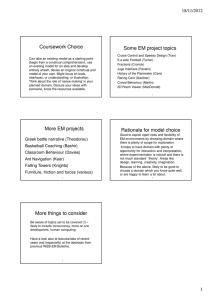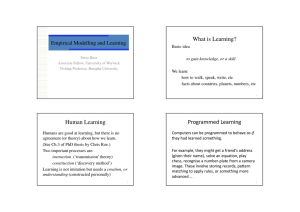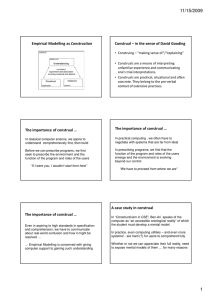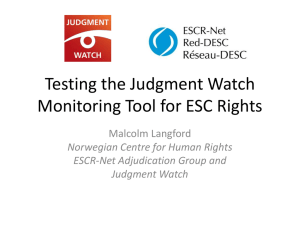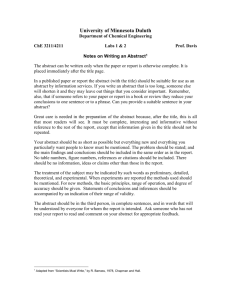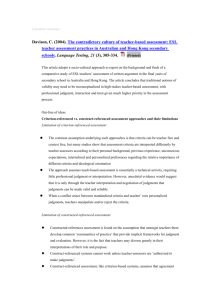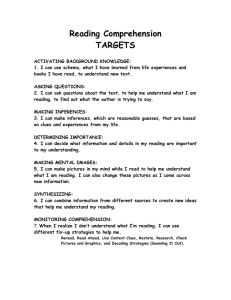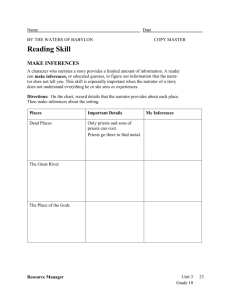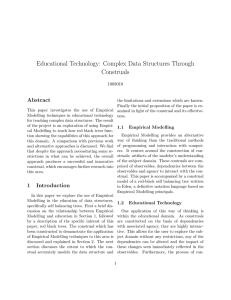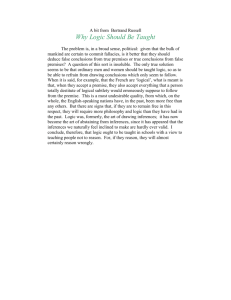You Get What You Pay for But I Don't: Effect of Construal level on
advertisement
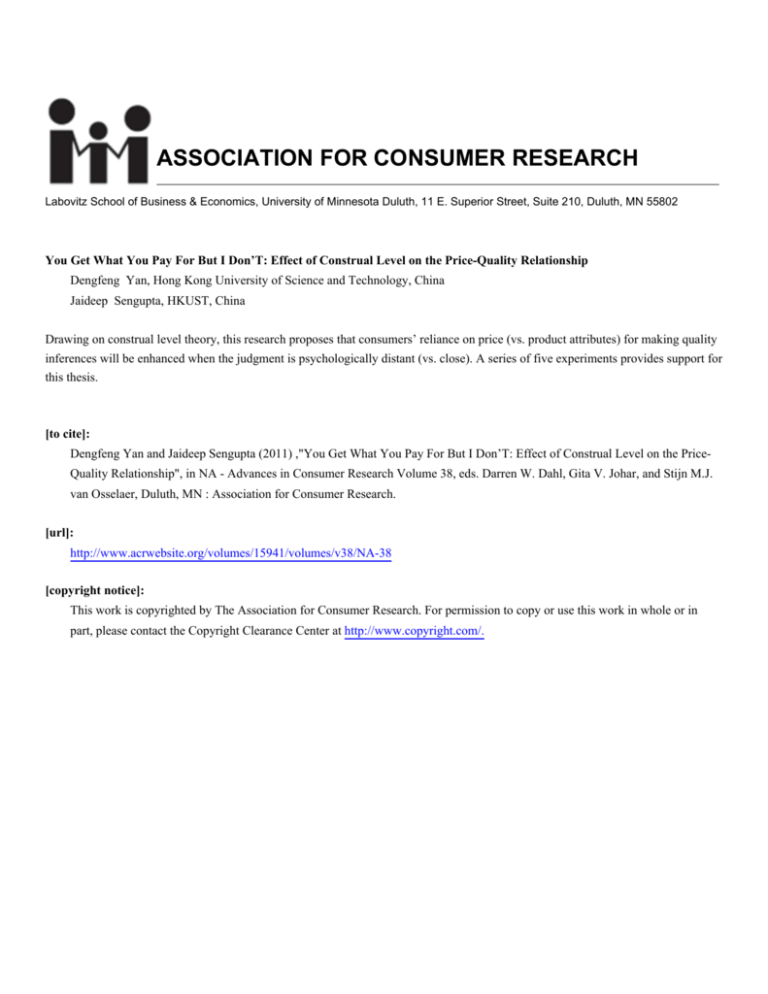
ASSOCIATION FOR CONSUMER RESEARCH Labovitz School of Business & Economics, University of Minnesota Duluth, 11 E. Superior Street, Suite 210, Duluth, MN 55802 You Get What You Pay For But I Don’T: Effect of Construal Level on the Price-Quality Relationship Dengfeng Yan, Hong Kong University of Science and Technology, China Jaideep Sengupta, HKUST, China Drawing on construal level theory, this research proposes that consumers’ reliance on price (vs. product attributes) for making quality inferences will be enhanced when the judgment is psychologically distant (vs. close). A series of five experiments provides support for this thesis. [to cite]: Dengfeng Yan and Jaideep Sengupta (2011) ,"You Get What You Pay For But I Don’T: Effect of Construal Level on the PriceQuality Relationship", in NA - Advances in Consumer Research Volume 38, eds. Darren W. Dahl, Gita V. Johar, and Stijn M.J. van Osselaer, Duluth, MN : Association for Consumer Research. [url]: http://www.acrwebsite.org/volumes/15941/volumes/v38/NA-38 [copyright notice]: This work is copyrighted by The Association for Consumer Research. For permission to copy or use this work in whole or in part, please contact the Copyright Clearance Center at http://www.copyright.com/. You Get What You Pay for But I Don’t: Effect of Construal Level on The Price-Quality Relationship Dengfeng Yan, Hong Kong University of Science and Technology, China Jaideep Sengupta, Hong Kong University of Science and Technology, China Extended Abstract Consider the following scenario: you observe that a friend has bought a well-designed, attractive bag for a surprisingly low price. What inference would you draw regarding the quality of that bag: high quality (because of its attributes such as design and materials) or low quality (because of the low price)? And would your quality inference be any different given a perspective shift–namely, would you be more or less inclined to assess quality on the basis of price if it were a bag you had bought yourself? Alternately, suppose you were evaluating the quality of a product for immediate use as compared to future use–when would you give greater weight to the product’s price, as opposed to its attributes, when forming your judgment of quality? In seeking to answer questions such as the above, this paper addresses the key issue of how consumers form inferences regarding product quality; and in particular, the extent to which they base these inferences on price as opposed to product attributes. The current research builds on construal level theory (Trope, Liberman, and Wakslak 2007) to propose a key contingency as to when the influence of price on quality perceptions may be diminished or enhanced. The central idea is that price has greater impact on consumers’ quality judgments of psychologically distant vs. nearer purchases, with the reverse being true for the impact of product attributes. The concept of psychological distance subsumes several dimensions, such as interpersonal distance (e.g., whether an inference is drawn on the basis of one’s own or another’s behavior) and temporal distance (whether an inference has to do with the immediate or distant future). Thus, invoking construal level theory allows us to provide a unified answer to the seemingly disparate questions raised in the opening paragraph as to how price may influence quality perceptions in different scenarios. Theoretical Background Findings from the construal theory literature suggest that abstract information, compared with concrete information, tends to exert more impact on representations and judgments of psychologically distant events, while the reverse holds when the focal judgment is about psychologically near events (e.g., Liberman and Trope 2000). We argue that this premise contains direct implications for how quality inferences are formed in different situations. Compared to specific, concrete product attributes, price can be thought of as a more abstract, general cue, especially with regard to its implications for quality. One reason for the relatively more abstract nature of the price cue has to do with it being a universal component for practically all products; thus, the price-quality heuristic itself represents a generalized abstraction of a consumer’s many observations and experiences. In contrast, the diagnosticity of attributes is usually specific to different product categories (e.g., hard disk capacity can be used to infer computer quality, but is inapplicable to judgments about cars; on the other hand, the physical attractiveness of the packaging is often used for quality judgments of food items, but less so for computers). Indeed, the idea that the price-quality belief is an abstract “theory” while product attributes are more concrete “data” has been widely adopted in previous consumer research (Baumgartner 1995; Broniarczyk and Alba 1994). In light of this distinction, and given the preceding arguments arising from construal level theory, it follows that: Consumers’ reliance on price for making quality inferences will be enhanced when the judgment is psychologically relatively distant. Information relating to product attributes, on the contrary, will be utilized more when the quality judgment is psychologically closer. Studies A series of five experiments provided convergent support for these predictions. The first three experiments used the “self” vs. “other” interpersonal dimension to operationalize psychological distance. The first study looked exclusively at the influence of price on quality judgments. Participants were asked to predict the quality of a series of products whose prices (high vs. low) were given; they were told either that the purchase had been made by themselves (“self” condition, representing low psychological distance) or by others (“other” condition, representing high psychological distance). Experiment 2 assessed quality inferences after manipulating both price and the favorability of product attributes. Specifically, we asked participants to judge the tastiness of a dish of fried rice, on the basis of two cues: its price, and its physical attractiveness. In Experiment 3, we sought to replicate the previous findings obtained on quality assessments (Experiments 1 and 2) using a selection paradigm. Instead of simply being asked to make a quality judgment based on information about a single product, participants were asked to indicate which of two yogurts was tastier: one that was expensive and had an unattractive package, while the other was presented as being cheap but attractive. Experiment 4 then operationalized psychological distance through a different (temporal) dimension. Finally, experiment 5 provided strong support for the posited mechanism by directly manipulating construal level. In line with our hypotheses, and across different product categories, results across from all of these studies showed that participants relied more on price than on product attributes when predicting product quality from an “other” vs. a “self” perspective; in contrast, the weight accorded to product attributes followed the reverse pattern. It is noteworthy that convergent support for our predictions was obtained across a variety of product categories, different dependent variables (single-option quality judgments as well as the choice paradigm used in experiment 3), pre- and post purchase scenarios, and several different manipulations of construal level, including two different dimensions of psychological distance (interpersonal and temporal) as well as the direct manipulation used in experiment 5. 656 Advances in Consumer Research Volume 38, © 2012
